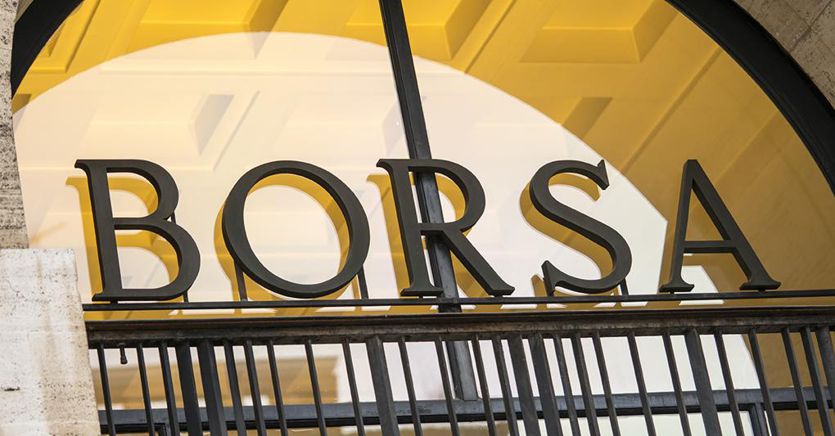A crack in the Standard Model of particle physics has widened slightly, but it is not yet certain whether it will break. This is shown by new measurements from the Muon g-2 experiment at the American research center Fermilab. Muons, the heavy brothers of electrons, appear to behave slightly differently than the standard model predicts. This may mean that there are new particles or other physical phenomena that we do not yet know. Particle physicists are enthusiastic. “It’s a top result,” says Freya Blekman, professor of particle physics at the Vrije Universiteit Brussel and not involved with Muon g-2.
The Standard Model, which describes all known building blocks of the cosmos and their mutual forces, works very well, but it is not complete. For example, it does not explain why dark matter appears to exist or why everything around us is matter and we see almost no antimatter. “That’s why particle physicists are trying to poke holes in the Standard Model,” says Blekman. The crack of Muon g-2 could become such a hole.
Read about the results of last March: Cautious arousal among physicists: particle behaves strangely
Last March, physicists also came up with the results of a muon measurement that describes a crack in the standard model. The new finding looks at a different aspect of muons and supports a result from nearly twenty years ago. Then the same Muon g-2 experiment was conducted at the American Research Institute in Brookhaven. At the time, a deviation from the standard model was also measured, but the measurement was not accurate enough to be able to say with certainty that something strange is going on.
In the mothballs
The experiment was mothballed for more than ten years until it was decided to move the setup to Fermilab, hundreds of kilometers away, says Gerco Onderwater of the University of Groningen. He was involved with ‘Brookhaven’. At Fermilab, the experiment has been rebuilt and improved.
Muon g-2 still measures the same as it did twenty years ago: the magnetic moment of muons. To measure this property, the muons are placed in a circular tube with a diameter of fourteen meters. Powerful magnets ensure that the muons whiz through this tube at a high speed. At the same time, the magnetic field causes the muons to spin around their axis. This will cause them to wobble a bit. The magnetic moment of the muons is derived from the degree to which they wobble. “You can compare it to a spinner,” says Blekman. “By measuring very accurately how a spinner wobbles while spinning, you can deduce how the mass is distributed.” In the case of Muon g-2, the wobble of the muons in the magnetic field does not tell anything about the mass distribution, but about their magnetic moment.
Virtual particles
The standard model predicts that the value of the magnetic moment of a muon is 2 (in a certain unit of measure). This value applies to muons that are not disturbed by other particles. There is a vacuum in the circular tube of the Muon g-2 experiment. So you do not expect disruptive particles. Yet this is not the whole story. A vacuum is never really empty. Because of so-called quantum fluctuations, particles appear everywhere from nowhere, which also disappear very quickly. All possible subatomic particles can appear in this way for a short while next to a muon. These so-called ‘virtual’ particles influence the magnetic moment. The more different particles there are, the more the magnetic moment of the muons is affected.
This is a terribly difficult calculation
Gerco Underwater University of Groningen
To determine the correct theoretical value of the magnetic moment, theorists very accurately calculate the effect of all the particles that we know and that exist according to the Standard Model. “This is a terribly difficult calculation,” says Onderwater. A large group of theorists have worked for years to calculate how much the magnetic moment of muons deviates from the value 2 according to the standard model, due to the effect of virtual particles. That turns out to be slightly more than one percent.
The Muon g-2 experiment looked at how much the measured value of the magnetic moment differs from 2. Twenty years ago, the experiment in Brookhaven showed that the measured value differs slightly from the value that theorists calculated so carefully. The new results confirm this. The magnetic moment of muons appears to be slightly greater than expected.
“The most obvious explanation for this deviation is that there are one or more extra particles that do not appear in the standard model,” says Blekman. These new particles can then also emerge as virtual particles next to muons and influence their magnetic moment. The experiment does not say what new particles these are, but their existence would leave a considerable gap in the standard model. Exactly what particle physicists hope for.
Yet they are not celebrating yet. The new measurements are also not yet accurate enough to be able to speak of a discovery. That is why the experiment at Fermilab continues. And in Japan, too, attempts are being made to measure muon g-2 in a new way. In the coming years we can expect more measurements, with higher accuracy, says Onderwater. The crack in the standard model has grown, but a hole has not yet been shot in it.
–
/s3/static.nrc.nl/images/gn4/stripped/data69443539-d254bd.jpg)

